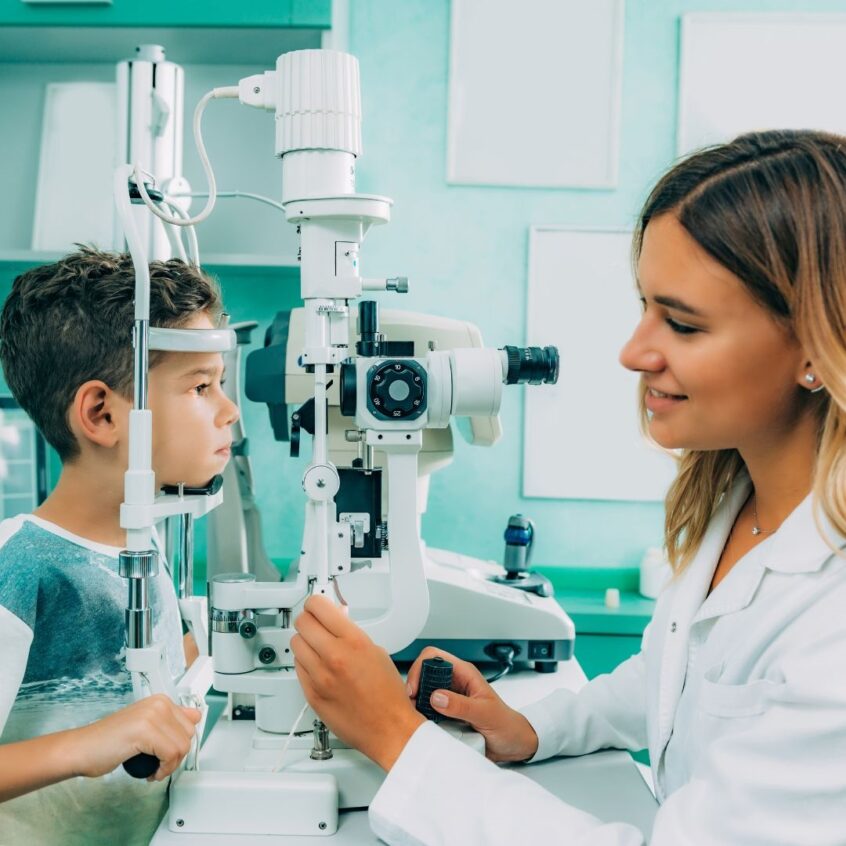As the summer winds down and the back-to-school season approaches, parents and guardians are busy preparing their children for a successful academic year. Amidst the flurry of buying school supplies, new clothes, and getting ready for the new routine, it’s crucial not to overlook one essential aspect of your child’s health: their vision.
Good vision is fundamental to your child’s learning experience. Studies have shown that up to 80% of learning is visual, meaning that if your child’s vision isn’t up to par, it can significantly impact their academic performance and overall well-being. Here’s how you can ensure your child’s vision is ready for the classroom.
1. Schedule a Comprehensive Eye Exam
The most important step in ensuring your child’s vision health is scheduling a comprehensive eye exam with an eye care professional. Unlike school vision screenings, which are helpful but limited, a comprehensive eye exam can detect a range of vision issues, including:
- Nearsightedness (myopia)
- Farsightedness (hyperopia)
- Astigmatism
- Strabismus (crossed eyes)
- Amblyopia (lazy eye)
- Binocular vision problems
An eye exam can also identify early signs of more serious conditions like glaucoma or cataracts. Experts recommend that school-aged children have their eyes examined at least once every two years, or more frequently if they already wear glasses or contacts.
2. Look Out for Signs of Vision Problems
Even between eye exams, it’s important to be vigilant for signs that your child might be experiencing vision problems. Some common indicators include:
- Squinting or closing one eye
- Sitting too close to the TV or holding books close to their face
- Frequent headaches or eye strain
- Difficulty reading or frequently losing their place while reading
- Complaints of blurry vision or double vision
- Poor performance in school
If you notice any of these signs, schedule an eye exam as soon as possible.
3. Encourage Good Visual Habits
Good visual habits can help reduce eye strain and promote overall eye health. Encourage your child to:
- Take regular breaks from screen time: The 20-20-20 rule is a great guideline. Every 20 minutes, look at something 20 feet away for at least 20 seconds.
- Maintain a proper reading distance: Books, tablets, and computers should be held at least 18 inches away from the eyes.
- Ensure proper lighting: Make sure your child’s study area is well-lit to reduce eye strain.
4. Provide a Balanced Diet Rich in Eye-Healthy Nutrients
Nutrition plays a significant role in eye health. Ensure your child’s diet includes:
- Vitamin A: Found in carrots, sweet potatoes, and leafy greens, it is essential for good vision.
- Lutein and Zeaxanthin: These antioxidants are found in green leafy vegetables, eggs, and corn, and help protect the eyes from harmful light.
- Omega-3 Fatty Acids: Found in fish like salmon and flaxseeds, they are crucial for visual development and retinal function.
- Vitamin C: Found in citrus fruits, strawberries, and bell peppers, it helps reduce the risk of cataracts and macular degeneration.
5. Protect Eyes from UV Rays
Ultraviolet (UV) rays can harm your child’s eyes, just as they can damage their skin. Ensure your child wears sunglasses that block 100% of UVA and UVB rays whenever they are outdoors.
As you prepare your child for the new school year, remember that good vision is a critical component of their academic success and overall well-being. By scheduling regular eye exams, watching for signs of vision problems, encouraging good visual habits, providing a balanced diet, considering vision supplements, and protecting their eyes from UV rays, you can help ensure your child’s vision is ready for the classroom.
